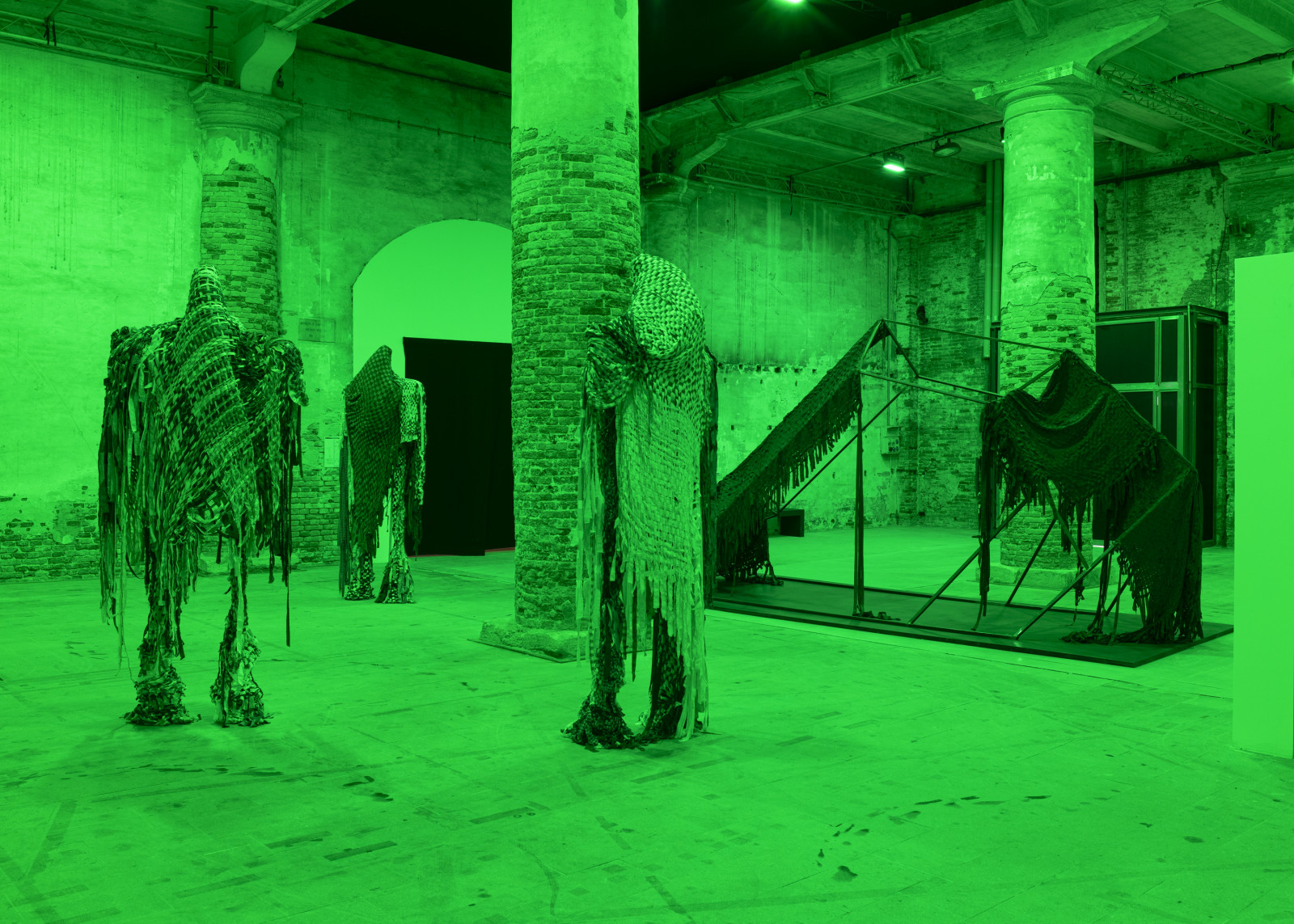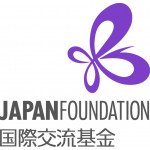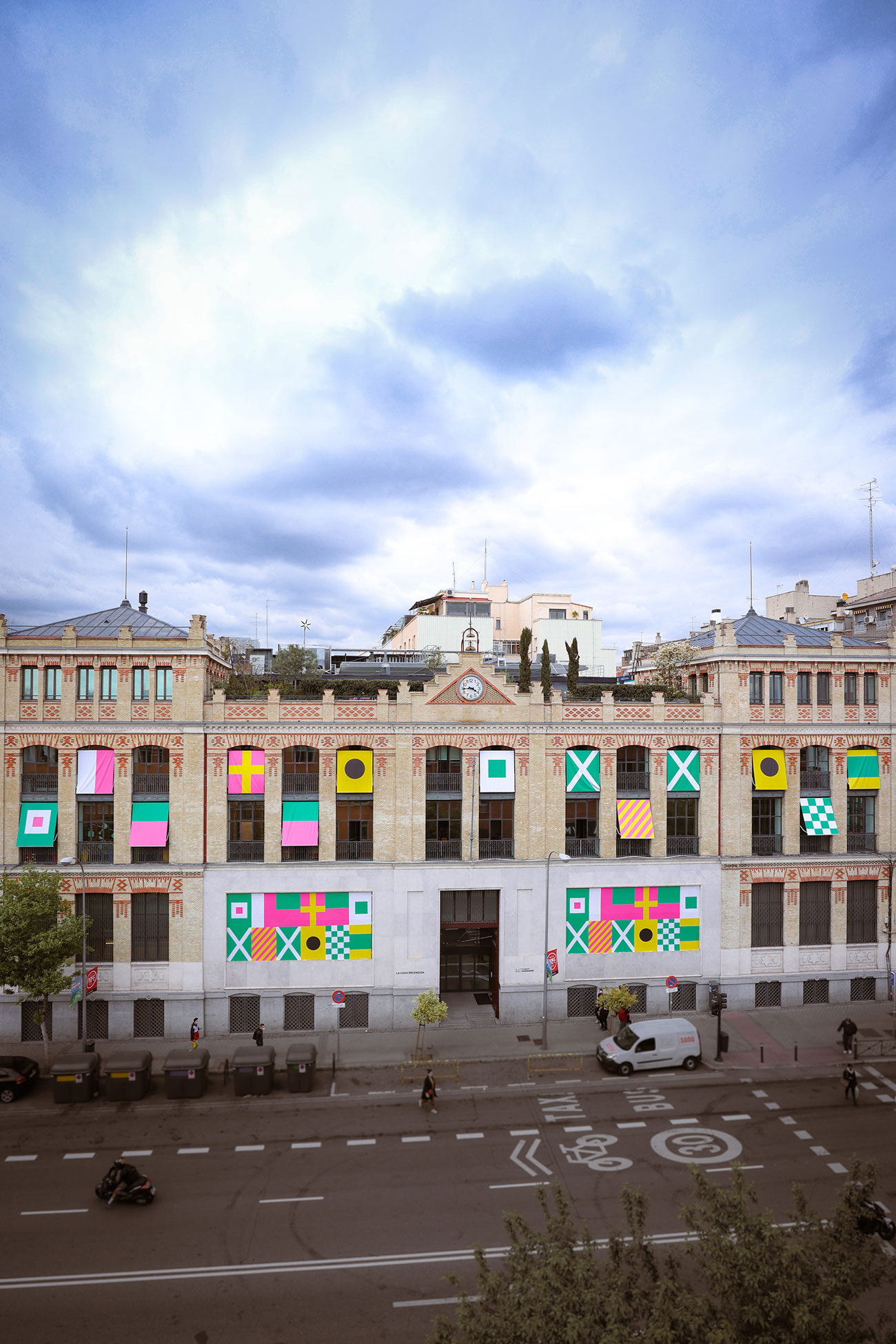Loving the Alien
Loving the Alien is an invitation to reconsider the limits of our bodies and identities, reflect on otherness, and imagine possible metamorphoses through the positions adopted by four artists: Sandra Mujinga, Anne Duk Hee Jordan, Mari Katayama and Ovartaci.
| Location: | Sala B, Sala C |
La Casa Encendida of Fundación Montemadrid presents the exhibition Loving the Alien, curated by Laura López Paniagua, which opens Thursday 2 February. Through the artists Sandra Mujinga, Anne Duk Hee Jordan, Mari Katayama and Ovartaci, the curator explores the notion of the ‘alien’, a word with multiple meanings: extraterrestrial, foreigner, stranger, outsider, unknown or unfamiliar.
The exhibition borrows its title from the song ‘Loving the Alien’ by David Bowie, who himself played with the polysemy of the word and which the curator has used as the starting point for her analysis of the concept of otherness: the construction of ‘us’ as opposed to the ‘other’ in which the perception of the latter as something alien, or even dangerous, ultimately establishes a hostile distance from everything that is different. Loving the Alien asks us to consider the following questions: What is identity? Are there others inside us? Are we not, as the science says, merely the sum and symbiosis of multiple organisms? Do we not also exist thanks the gaze of others?
In the final instance, the exhibition is also conceived as an attempt to explore speculative fictions that might enable us to shift the paradigm in a world marked by the uncertainties of wars, the environmental crisis and artificial intelligence.
The artists featured in the exhibition draw inspiration for their works from sci-fi stories and themes as diverse as colonial amnesia, the human relationship with nature, and the gaze of the other. Each with their own discourse, they all arrive at the idea of the alien through the different meanings of the word, revealing it to us almost as another self with whom we coexist.
Reworlding Remains (2021) and Sentinels of Change (2021). Sandra Mujinga. Room C
“Forgetting, in itself, remakes landscape, as we privilege some assemblages over others. Yet ghosts remind us. Ghosts point to our forgetting, showing us how living landscapes are imbued with earlier tracks and traces.” Anna Tsing, Elaine Gan, Nils Bubandt, Heather Swanson: Arts of Living on a Damaged Planet: Ghosts and Monsters of the Anthropocene, 2017, University of Minnesota Press, p.6.
A supernatural green light—extraterrestrial green, or the green of night vision cameras—filters out of the exhibition in Room C, drawing the attention of visitors to Loving the Alien and inviting them to enter and discover the works of the Congolese-Norwegian artist Sandra Mujinga.
Inside, three imposing headless monsters or giants made of cloth are insinuated. Where have they come from? Who are they? Is the cloth their skin?
Sandra Mujinga (1989, Goma, Democratic Republic of the Congo) is a multidisciplinary artist with a Norwegian passport who lives between Oslo and Berlin. She learned how to work with cloth from her mother and entered the Oslo Academy of the Arts after a brief stint in the architecture faculty. Mujinga’s work revolves around a profound interest in the body, including its absence, and in visibility and invisibility. In her installations, which are populated by nocturnal elements, camouflages and cyborg reminiscences, she creates border spaces that often contain spectral humanoid figures that question us, as here in Loving the Alien.
The speculative fictions of Afrofuturism and self-representation are two central themes in Mujinga’s work. Receiving its first showing here in Spain, her work can be found in the collections of the MoMA in New York, the Hamburger Bahnhof in Berlin, the National Museum in Oslo, and the Museum of Modern Art in Warsaw. In 2023 she held two solo shows—Fleeting Home (Museum der Bildenden Künste, Leipzig, Germany) and Love Language (Croy Nielsen, Vienna, 2023)—and took part in group shows at the Guggenheim and MoMA in New York (2023), as well as at the Venice Biennale in 2022. In 2024 she will hold a solo show entitled Time As a Shield at the Kunsthalle Basel, Switzerland.
Unruhig bleiben / Staying with the Trouble (2019), Brakfesten – La Grande Bouffe (2022, in collaboration with Pauline Doutreluingne). Anne Duk Hee Jordan. Room B
“Staying with the trouble requires making odd kin; that is, we require each other in unexpected collaborations and combinations, in hot compost piles.” Donna J. Haraway. Staying with the Trouble: Making Kin in the Chthulucene, 2016
Transience and transformation are the central themes in the work of Anne Duk Hee Jordan (Korea, 1978), which frequently urges us to change perspective by shifting the focus away from humans and towards the entire ecology.
Whereas in Mujinga’s work the alien refers to ghosts from the past erased by colonialism and histories that could never exist, or that we don't allow to exist, in Anne Duk Hee Jordan’s work the ‘other’ signifies the transformations we need to bring about, or what we need to become in a planet that is heading for destruction. It also means the ‘other yet to discover’, all those human beings with whom we need to establish a symbiosis to repair our relationship with nature.
Following philosopher Donna Haraway’s exhortation in her book of the same title to become other critters in order to survive in a threatened planet, in the video Staying with the Trouble Duk Hee presents an epic story about metamorphosis, mating and cannibalism featuring butterflies, amphibians, bacteria and fungi. Similarly, in Brakfesten – La Grande Bouffe, Duke Hee shows us the way to transfiguration through a Swedish forest infected by Dutch elm disease. What initially looks like a tragic cemetery of trees is soon revealed to be a magical scenario of the ecological cycle in which death, plague and putrefaction are simultaneously a banquet for beetles and mycelium.
shell (2016), bystander #014, #023, (2016), leave-taking #06, #05, #04 (2021), possession #2312, #2355, #2429 (2022). Mari Katayama. Room C
“My mind is human. My body is manufactured. I am the first of my kind, but I won’t be the last. We cling to memories as if they define us, but what we do defines us. My ghost survived to remind the next of us that humanity is our virtue. I know who I am, and what I’m here to do.” Major Mira Killian. Ghost in the Shell (2017)
An unclassifiable artist whose work defies easy interpretation, in her photographic self-portraits Mari Katayama (Saitama, Japan, 1987) delves deep into her own identity, demonstrating a strange vulnerability, strength and dignity with surreal undertones.
Through images of her body, her prosthetic legs, her alter-ego mannequins and her personal belongings, Katayama explores femininity, sexuality and different psychological states, inviting us to ask ourselves the following questions: To what extent are we our body? How much of our body or our objects shapes our identity? To what extent does the gaze of the ‘other’ define and possess us?
Katayama combines her creative activity with the promotion of her High Heel Project, conducted in collaboration with footwear firm Sergio Rossi, Vogue Japan and Nabtesco Corp, which aims to create prosthetic legs so that she can wear high heels, walk and perform on stage (she is also a model, singer and keynote speaker). Her main exhibitions include Performer and Participant (Tate Modern, London, 2023), Home Again (Maison Européenne de la Photographie, Paris, 2021) and her participation in the 58th Venice Biennale (2019). She is the author of GIFT, published by United Vagabonds in 2019.
Ovartaci. Room C
“Do as I: liberate thyself.” The Signature of Madness, Aarhus, Aarhus University Press, 2022, p. 52.
Born Louis Marcussen in 1894, Ovartaci soon identified as a woman. After a journey of self-discovery with psychotropic substances in Argentina, followed by a psychotic episode, they were admitted to the
psychiatric wing of Risskov Hospital in Aarhus (Denmark) and lived most of their life there. When their request for sex change surgery was refused, they self-mutilated their body. Wanting neither a penis nor the urges associated with it, they self-identified as a woman until practically the end of their life in 1985, simultaneously creating a world inhabited by the female sex: dolls, puppets, figurines and feminine “Spectres of Smoke”.
Over the four decades that Ovartaci spent in Risskov, they transformed their room into a magical chamber that enabled them to travel to a displaced Ancient Egypt, to the Kingdom of the Dead, to a parallel and pseudo-animal pre-Columbian America, and to other as yet unidentified fantasy worlds that they captured in drawings and paintings, and that prompt us to question how we perceive reality, others and ourselves.
Laura López Paniagua, the exhibition curator, is a writer, curator and university lecturer. As part of her doctoral studies, she held scholarships from the Deutscher Akademischer Austauschdienst (DAAD) in Berlin and the Fundación Mutua Madrileña. In 2020 she published the monograph Mike Kelley: Materialist Aesthetics and Memory Illusions (Mousse Publishing), based on her doctoral thesis. She has contributed to different art catalogues, including Mike Kelley: Ghost and Spirit (Bourse de Commerce – Pinault Collection, 2023), Aura Rosenberg: What Is Psychedelic (Mishkin Gallery and Pioneer Works Press, 2023), and May You Live in Interesting Times (Venice Biennale, 2019). She also contributes to specialist publications such as Mousse Magazine, Brumaria and DARDO. She has recently conceptualised and curated exhibitions for Schinkel Pavillon (Human Is, 2023, and H. R. Giger & Hans Bellmer, 2022) and Julia Stoschek Foundation (This Permanent Other Landscape, 2023). López Paniaga lives in Madrid and works at the School of Architecture and Design of IE University.
Curator: Laura López Paniagua
Artists: Sandra Mujinga, Anne Duk Hee Jordan, Mari Katayama and Ovartaci







